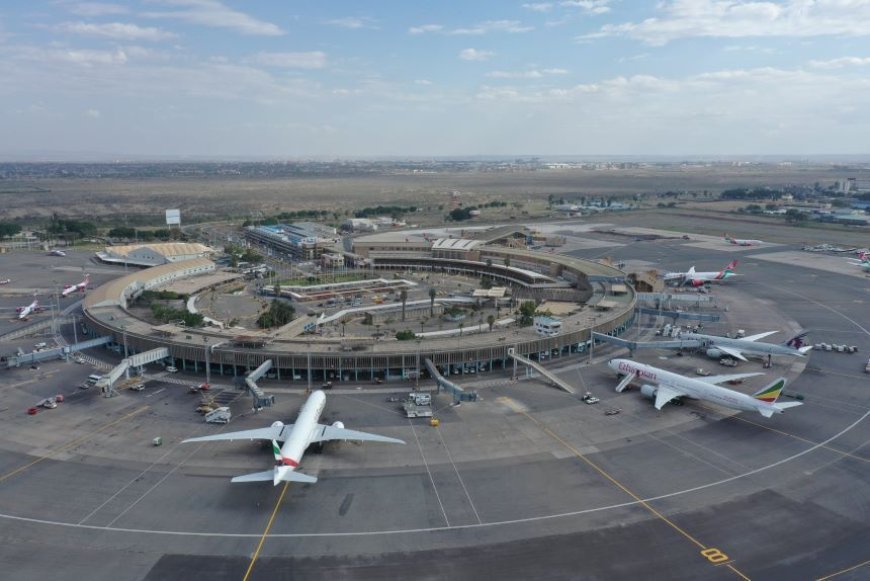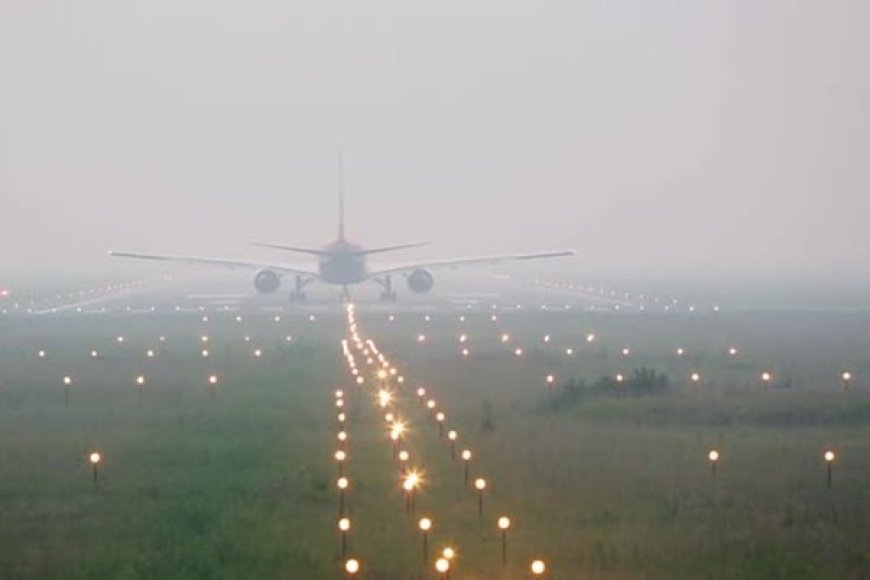Why Flights Were Diverted From JKIA
KQ cautioned passengers of some anticipated delays in departures and arrivals in Nairobi.

Planes which were scheduled to land at the Jomo Kenyatta International Airport (JKIA) were diverted on Thursday, April 17 to the Moi International Airport in Mombasa and Kilimanjaro International Airport in Tanzania.
National carrier Kenya Airways (KQ) in a statement confirmed the diversion of some of its flights, stating that this was due to poor visibility caused by fog at the country's largest airport.
As a result, KQ cautioned passengers of some anticipated delays in departures and arrivals in Nairobi.
“We wish to inform our customers that due to poor visibility caused by fog this morning, some of our flights scheduled to land at Jomo Kenyatta International Airport (JKIA) were diverted to Mombasa and Kilimanjaro.

Foggy weather at JKIA as of April 17, 2025. /EGLINE SAMOEI.X
“The diversions were a safety measure to ensure the well-being of our crew and customers, which is our number one priority,” read the statement in part.
KQ also warned that there would be delays in flight departures and arrivals due to the diversions. This meant that affected passengers were advised to contact the airline through its official support channels.
“As a result, we expect some delays today for certain flight departures and arrivals. We apologise for the inconvenience caused to our affected guests,” KQ stated, adding “Affected Customers can get in touch via +254711024747; WhatsApp +254705474747 or X @KQSupport for further assistance."
According to social media reports, JKIA was hit by fog at 6 AM in the morning, as evidenced by photos seen by Viral Tea.
We can, however, report that operations resumed at JKIA after an improvement in weather conditions. This is also backed up by spot checks on FlightRadar24, a live flight tracking platform.
Aviation weather intelligence is a high consideration for the aviation industry. Pilots and passengers alike worry about flying in bad weather. The weather forecast is a crucial element of the pilot’s pre-flight checks, and flight operations will continually update their weather information during flight.
Thunderstorms, lightning, rain, fog, winds, snow, and ice can all make for harrowing flights. But what is considered “too bad?” When should a flight be cancelled, instead of delayed? What weather conditions should a flight steer clear of once in the air?
Contrary to what many passengers believe, commercial aeroplanes can fly in almost all weather conditions and are rarely affected by terrible weather.
However, when airports and airlines are expecting severe weather, they may implement planned cancellations for some flights. This implementation helps to minimise the delays to remaining flights.
Although it may happen later than expected, it enables most passengers to get to their destination as quickly as possible. In this case, fog is often patchy and location-specific, with some airports affected while others, even those that are geographically close, remain clear.
All aircraft can be affected by fog and poor visibility, which can cause flight delays. Many commercial aircraft are equipped with autopilots that can land the plane in zero visibility; however, “on the ground” and during the take-off phase, when processes are manual, most air traffic delays occur.
When airport visibility drops below an acceptable Runway Visual Range, the airport enforces Low Visibility Procedures (LVPs). Namely, Air Traffic will reduce the number of aircraft taxiing and taking off to prevent accidents and incidents from occurring.
Many modern aeroplanes can land in even the densest fog using their automatic landing equipment. They can even land in zero visibility. However, it may then be impossible for the planes to taxi, as this is a manual process.

An aircraft taking off in foggy weather. /QUORA






